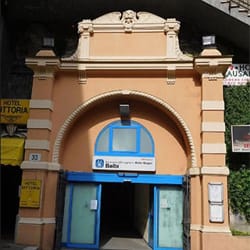The Mediterranean coast bathes in sunshine and supports productive agriculture. In particular, the Valencia region is where irrigation technology was introduced during the era of Arab rule and the rice and oranges they brought to the now fertile land made Valencia renowned across the world through Valencia paella and Valencia oranges.

The other day, I visited the hometown of Valencia oranges, so famous in Japan. Carcaixent is a small town of 20,000 in the Province of Valencia in the Autonomous Community of Valencia. It was in 1781 that the priest of the town, Mosén Monzó, worked with interested people there to draw water from wells using noria, traditional Arabic waterwheels, improve the arid land, make it fertile, and start growing oranges on a big scale.
I paid a visit on that trip to the Huerto San Vicente orchard, which started up a cultivation business in 1870 after making a fortune by manufacturing and selling the wooden boxes needed to export fruit from this the birthplace of orange cultivation. Today, it is a small business run by a family selling oranges on order under the Naranjas Ribera brand. The orange orchard surrounding the fine mansion built by the founder have a presence very reminiscent of a French vineyard and chateau.

By the way, Joaquín Sorolla, an impressionist painter from Valencia, chose an orchard densely covered in palm trees with oranges for the theme symbolizing the scenery of his hometown Valencia in a series called Visión de España (Vision of Spain). He traveled just about every day in 1916 to the village of Alcira, a neighbor of Carcaixent the birthplace, to complete this work. It is on display at the New York museum of The Hispanic Society of America, founded by Archer Milton Huntington, who also set up the museum (https://hispanicsociety.org/visit/galleries/sorolla-vision-of-spain-gallery/).

So far, I have been describing this orange as though it were native to Valencia, but the Valencia orange variety originated 9,600 km away from Valencia in Santa Ana, the county seat of Orange County, California, in the United States. It entered Europe from far off Asia, and then the oranges the Spanish missionaries brought to the New World were crossed around the mid-19th century to create a new variety crowned “the Valencia orange,” Valencia being famous at that time for growing sweet oranges. Now, the Valencia orange originating in the United States is back home and being grown in Valencia. Do we call this "leaving home then coming back” or maybe "a returnee child"?
In Japan, April 14th is Orange Day, while in Spain, oranges planted as street trees and garden trees in the courtyards along the Mediterranean coast and in Andalusian towns begin to flower and give off a fragrant scent heralding the arrival of spring. But these are what we call Seville oranges or "bitter oranges” (naranja amarga) and cannot be eaten fresh from the tree. In my house, we enjoy the juice mixed with soy sauce for a simple ponzu. A conventional case of “dumplings rather than blossoms” (function over aesthetics).






























































